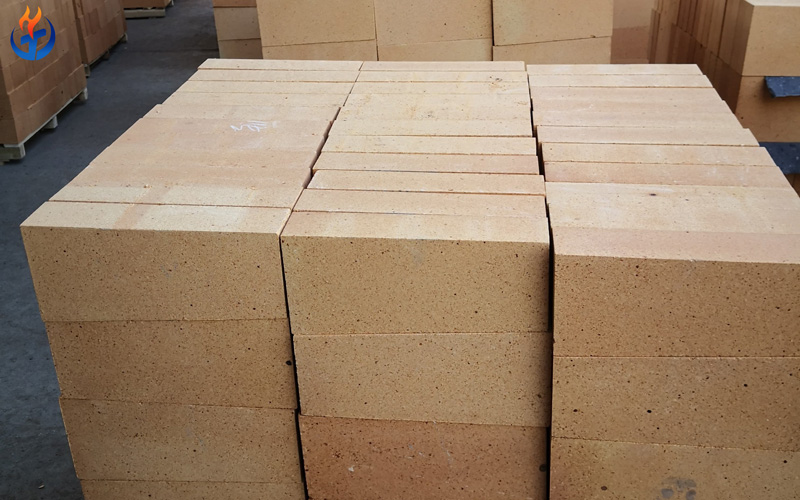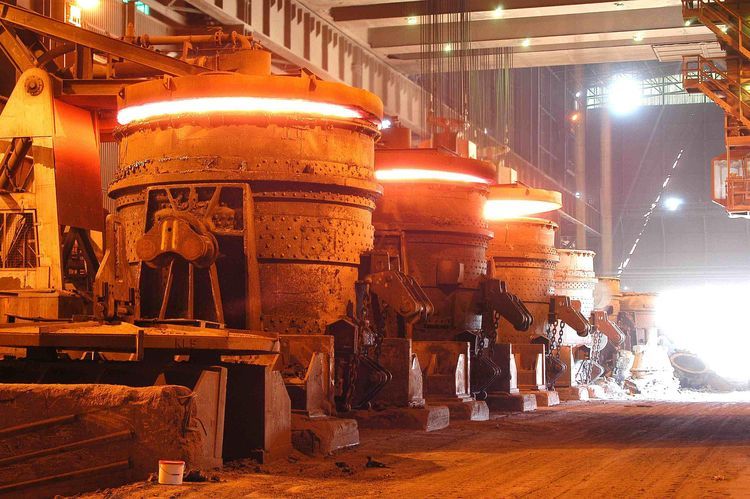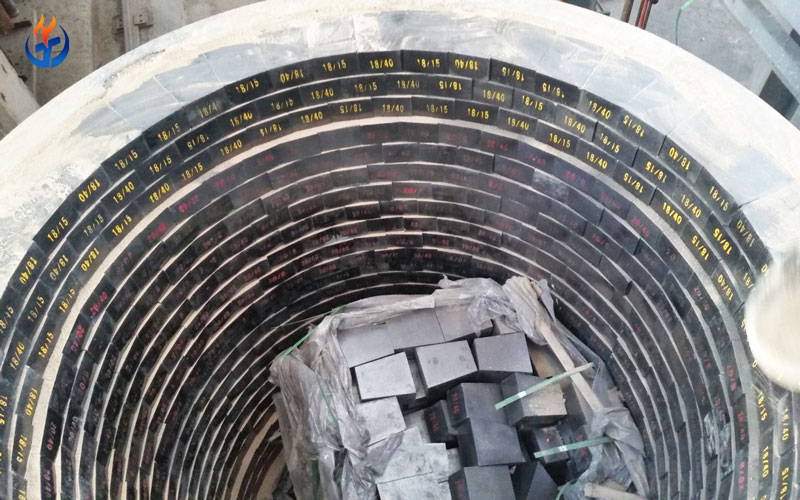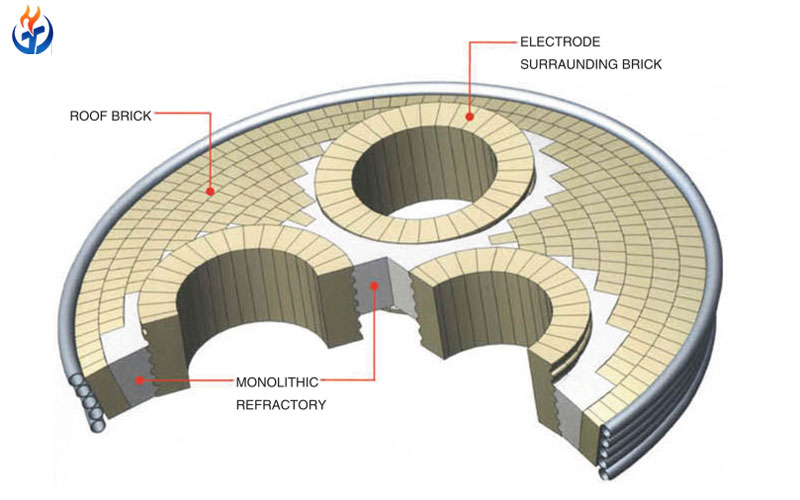The continuous development of the ceramic industry relies heavily on stable and efficient firing equipment. Among these, the tunnel kiln is one of the most widely used furnaces, providing continuous, large-scale, and energy-efficient firing processes for ceramic products. However, the reliable operation of a tunnel kiln is inseparable from the use of high-performance tunnel kiln refractory materials. These materials form the backbone of kiln structure, ensuring durability, thermal efficiency, and consistent firing quality. In this article, we will explore the applications of ceramic kiln bricks, their properties, and the key considerations in selecting the best refractory materials for tunnel kilns in ceramic production.
Understanding Tunnel Kilns in Ceramic Production
Tunnel kilns are long, horizontal, enclosed furnaces with a fixed structure. Unlike traditional batch kilns, in which ceramics are fired in intermittent cycles, tunnel kilns work continuously: products move slowly through different temperature zones on a car, from preheating and firing to cooling. This system offers several advantages for ceramic manufacturers:
Continuous operation for high productivity
Energy efficiency due to better heat recovery
Consistent quality through uniform temperature control
Automation compatibility for modern ceramic production lines
However, to maintain these benefits, tunnel kilns require carefully designed linings made of tunnel kiln refractory materials that can withstand high temperatures, thermal shocks, and chemical attacks from ceramic raw materials and firing atmospheres.
The Role of Tunnel Kiln Refractory
The refractory lining of a tunnel kiln serves multiple purposes:
Structural Support – Refractories form the walls, roof, and sometimes the base of the kiln, providing a stable structure that resists deformation at high temperatures.
Thermal Insulation – Refractories reduce heat loss, ensuring that thermal energy is used efficiently for firing ceramics instead of escaping into the environment.
Resistance to Chemical Attack – Ceramic raw materials, fluxes, and combustion gases can produce aggressive chemical reactions; the refractory lining must resist corrosion to extend kiln life.
Durability and Longevity – By withstanding repeated heating and cooling cycles, refractory linings protect the kiln and reduce maintenance costs.
Thus, the choice of ceramic kiln bricks and other refractory components directly impacts production efficiency, product quality, and operating costs.
Types of Refractories for Tunnel Kilns
Different zones of the tunnel kiln require different types of refractory materials. Below are the most commonly used tunnel kiln refractory categories:
1. Fireclay Bricks
Al₂O₃ content: 30–45%
Widely used in tunnel kilns due to their low cost and good resistance to high temperatures (up to 1,400°C).
Suitable for kiln walls and certain low-stress areas.
Excellent resistance to slag corrosion and thermal stability.
2. High Alumina Bricks
Al₂O₃ content: 50–80%
Better mechanical strength and refractoriness compared to fireclay bricks.
Applied in high-temperature zones where durability is crucial.
Commonly used for kiln roofs, burner zones, and hot face linings.

3. Mullite Bricks
Al₂O₃ content: 60–75%
Excellent thermal shock resistance, low thermal conductivity, and high strength.
Ideal for kiln crowns and areas subjected to frequent temperature fluctuations.
Mullite insulation bricks are often used as a lightweight lining to reduce energy consumption.
4. Silica Bricks
SiO₂ content: >93%
High refractoriness under load, making them suitable for kiln crowns in high-temperature zones.
Good resistance to acidic slags but poor thermal shock resistance.
5. Insulating Bricks
Lightweight refractory bricks designed primarily for thermal insulation.
Reduce overall heat loss and improve energy efficiency.
Typically used in the backup lining behind dense ceramic kiln bricks.
6. Castables and Monolithic Refractories
In modern tunnel kilns, castable refractories and monolithics are also applied.
Easy installation, fewer joints, and flexibility in design.
High-performance castables (such as low-cement alumina castables) can replace traditional bricks in certain areas.
Key Considerations in Selecting Tunnel Kiln Refractory
When choosing the right tunnel kiln refractory materials, ceramic manufacturers must evaluate several factors:
Operating Temperature – The maximum temperature in different kiln zones determines the type of brick required. For example, high alumina or mullite bricks are preferred in the firing zone.
Thermal Shock Resistance – Since tunnel kilns operate continuously, the refractory must resist cracking from temperature gradients during heating and cooling.
Chemical Resistance – The refractory should withstand chemical attack from combustion gases, fluxes, and ceramic materials.
Thermal Insulation – Energy efficiency is crucial in modern ceramic production; insulating refractories are used to minimize heat loss.
Mechanical Strength – Refractories must support the structural load of the kiln, especially in the roof and sidewalls.
Cost and Maintenance – The balance between initial cost and long-term performance must be considered. While high-quality refractories may cost more, they significantly reduce downtime and repair costs.
Typical Applications of Ceramic Kiln Bricks in Tunnel Kilns
Different types of ceramic kiln bricks are applied in various sections of tunnel kilns:
Preheating Zone: Fireclay bricks and insulation bricks are often used due to moderate temperatures.
Firing Zone: High alumina bricks, mullite bricks, or silica bricks provide high-temperature resistance and structural integrity.
Cooling Zone: Fireclay bricks with good thermal stability are suitable.
Kiln Roof/Crown: Mullite or silica bricks are applied for their high load-bearing capacity at elevated temperatures.
Kiln Car Decking: Dense refractory materials resist abrasion and chemical corrosion from ceramic products and fluxes.
By carefully matching the refractory material with the kiln zone, manufacturers ensure both kiln longevity and consistent ceramic quality.
Advances in Tunnel Kiln Refractory Technology
The demand for energy-efficient and environmentally friendly ceramic production has driven innovations in tunnel kiln refractory design:
Lightweight Insulating Bricks – Reduce heat loss, lower fuel consumption, and minimize CO₂ emissions.
High-Strength Castables – Provide quick installation, reduced downtime, and fewer joints.
Low-Cement Refractories – Offer better strength, corrosion resistance, and durability.
Prefabricated Modules – Speed up construction and simplify kiln maintenance.
These advancements not only enhance kiln performance but also help manufacturers meet stricter environmental regulations.
Benefits of Using High-Quality Tunnel Kiln Refractories
Extended Kiln Service Life – Stronger, more durable linings reduce the need for frequent replacements.
Improved Energy Efficiency – Lower heat loss translates to reduced fuel costs.
Stable Firing Conditions – Consistent temperatures improve ceramic product quality and reduce defects.
Lower Maintenance Costs – Less downtime and fewer repairs improve overall plant productivity.
Environmental Sustainability – Energy-efficient refractory designs support eco-friendly ceramic production.
Conclusion
The efficiency and reliability of tunnel kilns in ceramic production depend greatly on the performance of their refractory linings. By carefully selecting and applying the right tunnel kiln refractory materials—whether fireclay, high alumina, mullite, or insulating bricks—manufacturers can achieve longer kiln life, higher energy efficiency, and superior ceramic quality. With continuous advancements in refractory technology, ceramic industries are now better equipped to optimize kiln performance while meeting sustainability goals.
Investing in the right ceramic kiln bricks and advanced refractory solutions is not just a technical requirement but also a strategic decision that directly affects productivity, profitability, and competitiveness in today’s ceramic market.
Contact Xintai Refractory today for expert consultation and high-quality tunnel kiln refractory solutions that ensure reliable performance, energy efficiency, and long service life in your ceramic production.



